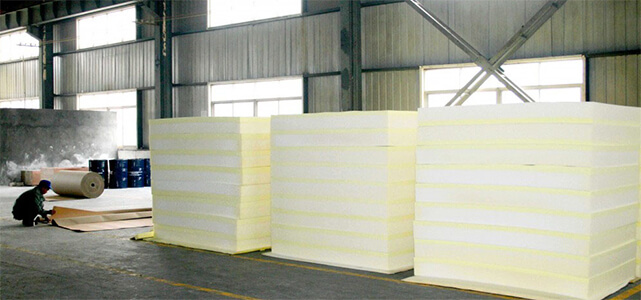Memory foam is a blend of polyurethane (a polymer made as a byproduct of petroleum refining) and additional chemicals that give the memory foam its low-resilience. It was originally developed by NASA in the 1970s for airplane cushioning and has since become one of the widest materials used in mattresses and pillows.
In plain English, what makes memory foam is its ability to contour to pressure and return to its original shape slowly after pressure is released. This process allows for it to react to pressure differently across its surface and provide a contoured, but aligned feeling for sleepers.
In mattresses, older or lower quality memory foam may sag from the repetitive pressure of laying or sitting. For this reason, those that are heavier should do additional research about soft memory foam bedding as they will sink more than alternatives and could lead to discomfort for some body types.
Lastly, over the recent years, there has been reports of off-gassing and toxic odors released from memory foam. Some lower quality or treated memory foam may have this problem and cause respiratory inflamation. It is important to make sure that memory foam is high quality.
Pros: Contouring comfort, competitive pricepoints, and widespread options.
Cons: Sagging and off-gassing problems with lower quality foams.
Overall Score: 9.3/10
Comfort: 9.4/10
Softness: 9.5/10
Heat: 8/10
Hypoallergenic: 8.1/10
Odor: 8.4/10
Eco-Conscious: 8.5/10
General Support: 8.7/10
Price Value: 9.4/10
Memory foam (or viscoelastic foam) is a polymer created during a chemical reaction between polyol and diisocyanate (two chemicals created from organic compounds). The ratio of polyol to diisocyanate is 2:1 to form polyurethane, though there may be other compounds that are added to create just the right amount of elasticity and density for each piece of foam. When the chemical reaction occurs in the presence of water with catalysts like tin and amines, a new viscous liquid in the consitency of a ice cream is formed. This hot mixture is then placed in a mold, dried, cooled, and cut for the use in pillows and mattresses. For most foam manufacturers, this end-to-end process of catalyzing the foam to clipping it for a mattress is about 8 hours.
Memory foam has wide spread use in pillows, toppers, and mattresses. Though memory foam is an industry buzzword, it is usually found only in the top layer of memory foam mattresses. Other layers of 'memory foam' mattresses are usually a blend of polyurethane foams with less elastic attributes.

